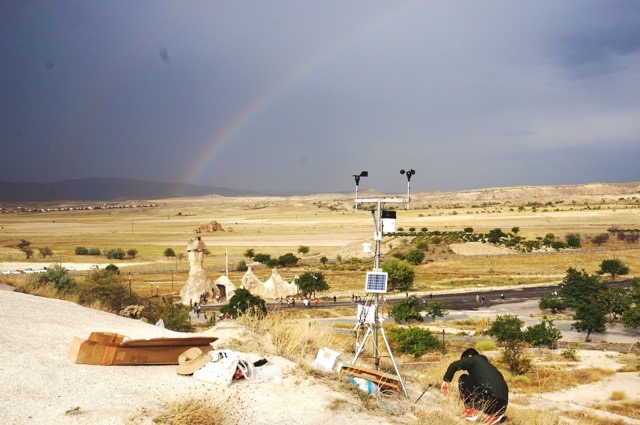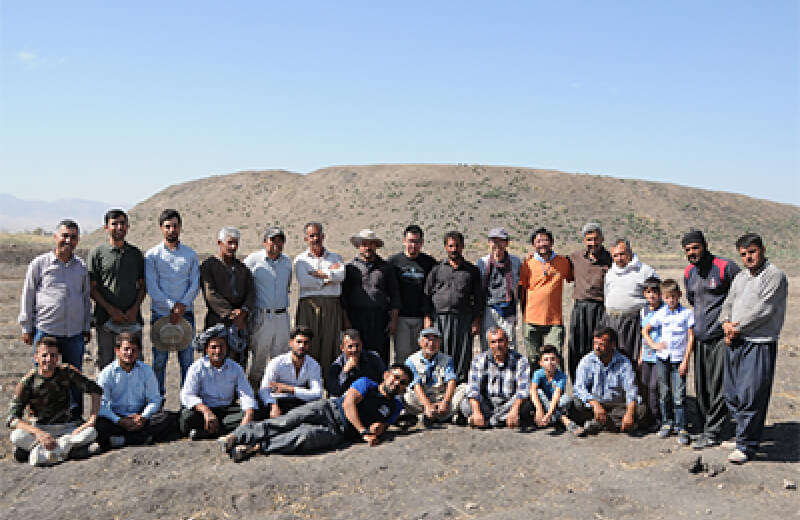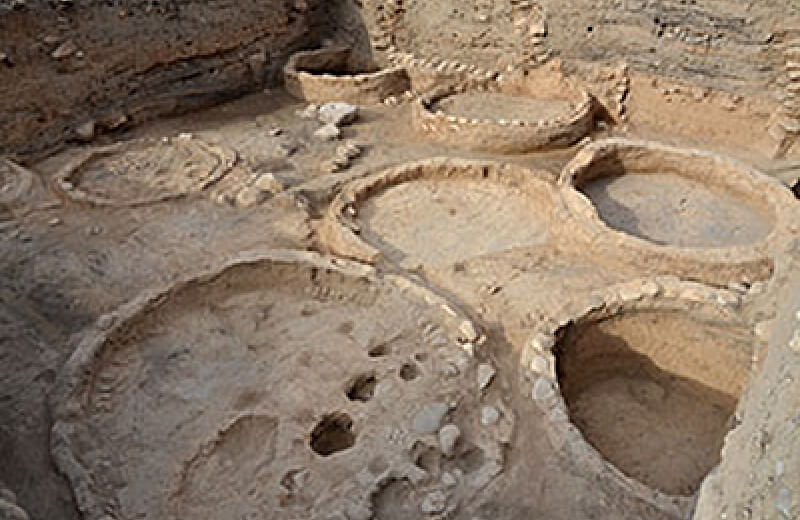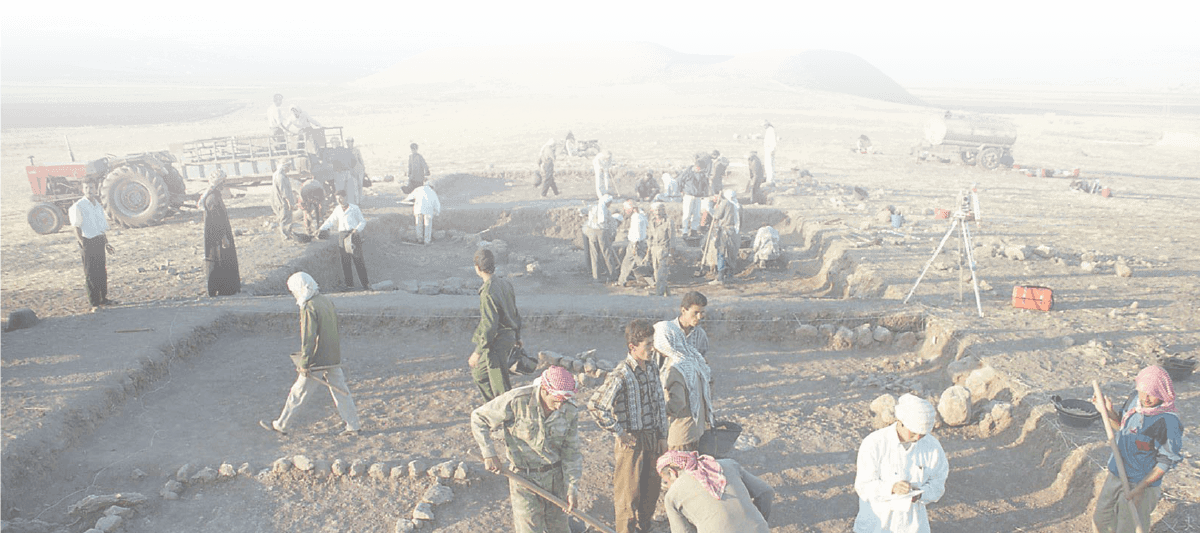

Fieldwork
- Publication
- Fieldwork
- Outreach
Excavations of Yasin Tepe:
Suleimani, Iraqi Kurdistan
Neo-Assyrian period (Iron Age)
Shigeo Yamada, Daisuke Shibata and other colleagues are undertaking the investigations of Yasin Tepe, a Neo-Assyrian site in Iraqi Kurdistan, which is currently excavated by Shinichi Nishiyama from Chubu University. The Neo-Assyrian Empire is the first imperial empire in history and existed from the 10th to 7th centuries. The Yasin Tepe site is one of the largest in the area and is considered to be one of the major cities of the Neo-Assyrian Empire. During excavations in 2016, large buildings with rooms similar in form to Reception Rooms were found.
Excavations of Hasankeyf
Höyük:
Batman, Turkey
Neolithic (c. 9600-9000 cal. BC)
The research team headed by Yutaka Miyake is continuing the excavations at Hasankeyf Höyük, a Neolithic settlement located on the upper Tigris River. Habitation of the site began about 12,000 years when humans first began the move away from hunting and gathering into a more sedentary village lifestyle. Analysis of the plant and faunal remains excavated from the site, however, shows no trace of plant cultivation or animal breeding and the site is known as a village of sedentary hunter-gatherers.
Survey of prehistoric sites
in Iraqi Kurdistan
Suleimani, Iraq-Kurdistan
A survey of various prehistoric sites in Iraqi Kurdistan is being undertaken by Akira Tsuneki, Ryo Anma and their team with the aim of clarifying the neolithization process in the eastern part of the fertile crescent. A drone was used for topographical and geological survey of prehistoric sites and surrounding terrain in Slemani Province, Iraqi Kurdistan region. The team is currently drafting maps and drawings from this data.
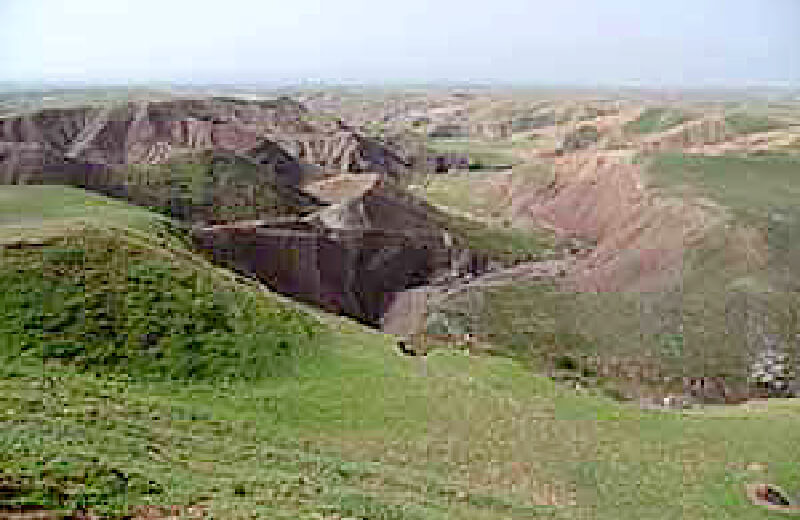
Conservation of wall paintings and
scientific investigations on deterioration
mechanisms of a tuff rock-hewn structure at
Üzümlü charch (Chapel of Niketas the Stylite) in Red Valley:
Cappadocia, Turkey: 2014-2016
Yoko Taniguchi had led the research project at Üzümlü church in the Cappadocia region. The church (Chapel of Niketas the Stylite) is decorated with a secco paintings dated to the end of 7th century AD. There are numbers of graffiti, mostly incised, some medieval Greek ones go back to 8-9th century while other Arabic or Turkish ones were added in modern century till recent years. Many historically important figures such as horses and saint figures, which correspond to Early and local Christianity, are kept and well documented in the project. Modern graffiti and traces of vandalism had been toned with a reversible and retreatable method.
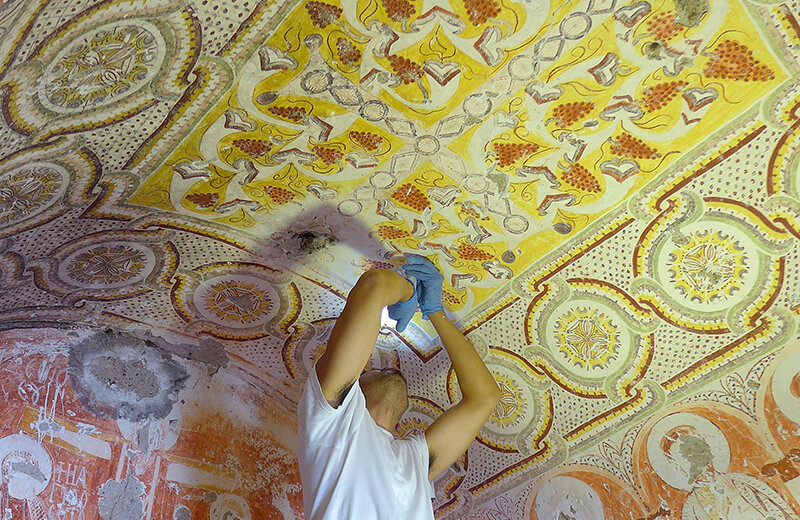
Conservation of wall paintings and
scientific investigations on deterioration
mechanisms of a tuff rock-hewn structure at
St. Simeon Chapel in Paşabağı
Cappadocia, Turkey: 2019-
To follow the project at the Chapel of Niketas the Stylite in Red Valley, Yoko Taniguchi has been leading another research project at St. Simeon Chapel in Paşabağı which has different geological and environmental context from Chapel of Niketas the Stylite. Kyoto University (Chiemi Iba), Mie University (Ikuo Watanabe), D&D (Co.), Nevşehir Restorasyon ve Konservasyon Bölge Laboratuvarı and numbers of Japanese and foreign universities cooperate in the project. The church is decorated with a secco paintings dated to the early 10th century AD. It has also a lot of damages as recent vandalism owing to tourism and cultural reasons.
